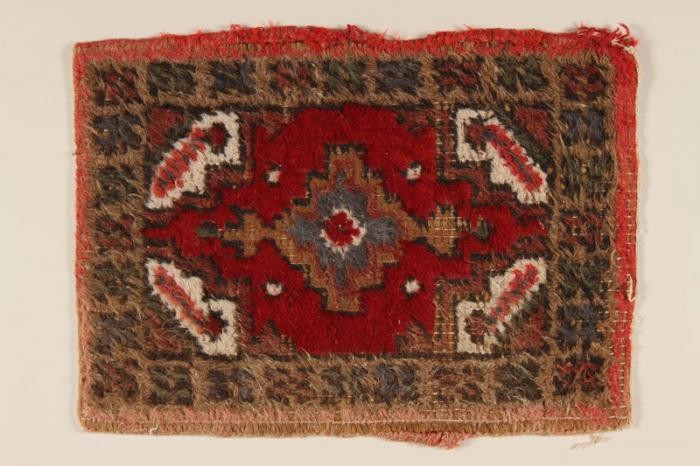![Marzahn, the first internment camp for Roma (Gypsies) in the Third Reich. [LCID: 86204] A large open field with several parked wagons. People of all ages gather around one wagon with a wood burning stove and laundry hanging on a drying line.](https://encyclopedia.ushmm.org/images/large/5fa9e003-521d-4ec0-960a-bb54bb0cd72a.jpg)
Marzahn, the first internment camp for Roma (Gypsies) in the Third Reich. Germany, date uncertain.
Item View![Romani (Gypsy) prisoners line up for roll call in the Dachau concentration camp. [LCID: 10742] Romani (Gypsy) prisoners line up for roll call in the Dachau concentration camp. [LCID: 10742]](https://encyclopedia.ushmm.org/images/large/452c0506-dce5-4d08-a7c6-884c8dfb60a3.jpg)
Romani (Gypsy) prisoners line up for roll call in the Dachau concentration camp. Germany, June 20, 1938.
Item View![Nazi police round up Romani (Gypsy) families from Vienna for deportation to Poland. [LCID: 16016] Nazi police round up Romani (Gypsy) families from Vienna for deportation to Poland. [LCID: 16016]](https://encyclopedia.ushmm.org/images/large/da654df9-ff15-4904-928b-ce80827d6fc0.jpg)
Austrian police round up Romani (Gypsy) families from Vienna for deportation to Poland. Austria, September-December 1939.
Item View![Deportation of Romani (Gypsy) families from Vienna to Poland. [LCID: 22005] Deportation of Romani (Gypsy) families from Vienna to Poland. [LCID: 22005]](https://encyclopedia.ushmm.org/images/large/89c6a1bf-1eaa-471e-a0fd-e6072f36882e.jpeg)
Onlookers watch during the resettlement of Romani (Gypsy) families from Vienna. Austria, September–December 1939.
Item View![Romani (Gypsy) inmates at forced labor in Ravensbrueck concentration camp. [LCID: 6036] Dozens of female prisoners stand at attention between the rows of workbenches. Bushels of reeds stand next to some of the prisoners.](https://encyclopedia.ushmm.org/images/large/bdaf0808-35ac-4c72-a564-45b5e83c269f.jpg)
Romani (Gypsy) inmates stand at attention during an inspection of the weaving mill, site of forced labor in the Ravensbrück concentration camp. In this workshop prisoners wove reed mats used to reinforce roads in swampy regions of the eastern front. Germany, between 1941 and 1944.
This photograph is from an SS propaganda album.
Item View![Forced-labor camp for Roma (Gypsies). Lety, Czechoslovakia, wartime. [LCID: 66778] Forced-labor camp for Roma (Gypsies). Lety, Czechoslovakia, wartime. [LCID: 66778]](https://encyclopedia.ushmm.org/images/large/fb2554a2-24f7-4f9c-9ff2-17d6c4e47eb7.jpeg)
Forced-labor camp for Roma (Gypsies). Lety, Czechoslovakia, wartime.
Item View![Romani (Gypsy) women and children interned in the Rivesaltes transit camp. [LCID: 22139] Romani (Gypsy) women and children interned in the Rivesaltes transit camp. [LCID: 22139]](https://encyclopedia.ushmm.org/images/large/4fca286f-3e75-4823-ae4a-659727cae39d.jpg)
Romani (Gypsy) women and children interned in the Rivesaltes transit camp. France, spring 1942.
Item View![Serbs and Roma (Gypsies) being deported to Kozare and Jasenovac, both Croatian concentration camps. [LCID: 85198] Serbs and Roma (Gypsies) being deported to Kozare and Jasenovac, both Croatian concentration camps. [LCID: 85198]](https://encyclopedia.ushmm.org/images/large/6389a16e-f794-4a4a-812f-5de685403f29.jpg)
Serbs and Roma (Gypsies) who have been rounded up for deportation. This photograph shows them being marched to Kozare and Jasenovac, both Croatian concentration camps. Yugoslavia, July 1942.
Item View![A Romani (Gypsy) victim of Nazi medical experiments to make seawater safe to drink. [LCID: 78680] An emaciated man with light skin tone lays on a cot with a wrap around his upper right arm. The veins in his arm are pronounced and visible. He grimaces while a figure leans over the bed.](https://encyclopedia.ushmm.org/images/large/aec19996-e104-4099-99f2-155b9cd8a55a.jpeg)
A Romani (Gypsy) victim of Nazi medical experiments to make seawater safe to drink. Dachau concentration camp, Germany, 1944.
Item View![A Romani (Gypsy) victim of Nazi medical experiments to make seawater safe to drink. [LCID: 78683] A nude man with a shaved head and medium-light skin tone lies on a white sheet on what appears to be the ground. The photograph only shows from the waist up and only part of his right arm.](https://encyclopedia.ushmm.org/images/large/d65a2037-adb7-4e53-b3be-cb076ecbc37b.jpeg)
A Romani (Gypsy) victim of Nazi medical experiments to make seawater safe to drink. Dachau concentration camp, Germany, 1944.
Item View![A Serbian gendarme serving the Serbian puppet government led by Milan Nedia escorts a group of Roma (Gypsies) to their execution. [LCID: 85181] A couple of uniformed officers escort a group of people down a road.](https://encyclopedia.ushmm.org/images/large/0624a077-a89f-487a-ac82-b366a2528be1.jpeg)
A Serbian gendarme serving the Serbian puppet government led by Milan Nedić escorts a group of Roma (Gypsies) to their execution. Yugoslavia, ca. 1941–1943.
Item View![Female survivors in the "Gypsy barracks" of the Bergen-Belsen concentration camp during liberation. [LCID: 63055] Female survivors in the "Gypsy barracks" of the Bergen-Belsen concentration camp during liberation. [LCID: 63055]](https://encyclopedia.ushmm.org/images/large/4be168ec-9c89-4423-97f2-c9a2ed77edcb.jpeg)
Romani (Gypsy) survivors in a barracks of the Bergen-Belsen concentration camp during liberation. Germany, after April 15, 1945.
Item View
This small patterned hooked rug was used as a shoe mat in the wagon of Rita Prigmore and her family when she was a child in Wurzberg, Germany, after World War II. Rita and her family were members of the Sinti group of Roma (Gypsies). She and her twin sister Rolanda were born in 1943. Rolanda died as a result of medical experiments on twins in the clinic where they were born. Rita was returned to her family in 1944. She and her mother survived the war and moved to the United States, before returning to Germany to run a Sinti human rights organization that sought to raise consciousness about the fate of Roma during the Holocaust.
Item View
We would like to thank Crown Family Philanthropies, Abe and Ida Cooper Foundation, the Claims Conference, EVZ, and BMF for supporting the ongoing work to create content and resources for the Holocaust Encyclopedia. View the list of donor acknowledgement.